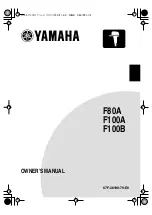
Easy
PIC
for dsPIC30
®
v7
page 10
Jumpers J1, J2, J3 and J4 are used to select PGC and PGD programming lines for your
microcontroller. Make sure to place jumpers in the proper position for your socket.
On-board programmer
What is mikroProg
™
?
How do I start?
pr
ogr
amming
mikroProg
™
is a fast USB 2.0 programmer with mikroICD
™
hardware In-Circuit
Debugger. Smart engineering allows mikroProg
™
to support all dsPIC30
®
DIP microcontrollers from Microchip
®
in a single programmer.
Outstanding
performance and easy operation are among it's top features.
In order to start using mikroProg
™
and program your microcontroller, you just
have to follow two simple steps:
1. Install the necessary software
- Install USB drivers
- Install mikroProg Suite
™
for PIC
®
software
2. Power up the board, and you are ready to go.
- Plug in the programmer USB cable
- LINK LED should light up.
DIP40B
DIP28C
DIP40A
DIP28A
DIP28B
Why so many LEDs?
Three LEDs indicate specific programmer operation. Link LED lights
up when USB link is established with your PC, Active LED lights up
when programmer is active. Data is on when data is being transferred
between the programmer and PC software (compiler or mikroProg
Suite
™
for PIC
®
).
Socket selection
DIP18
IMPORTANT - Programming/Debugging
mode raises MCU voltage to 5V!
When on-board mikroProg
™
programmer is in programming/debugging
mode, it automatically raises the MCU voltage to 5V regardless of the power
supply selection (jumper J16). Note that all external peripherals that can
only work on 3.3V must be removed from the board when programming/
debugging is in progress, otherwise they can be permanently damaged.
When programming/debugging is not in progress (execute mode or release
mode) you can connect both 3.3V or 5V peripherals to the board depending
on the position of jumper J16.











































